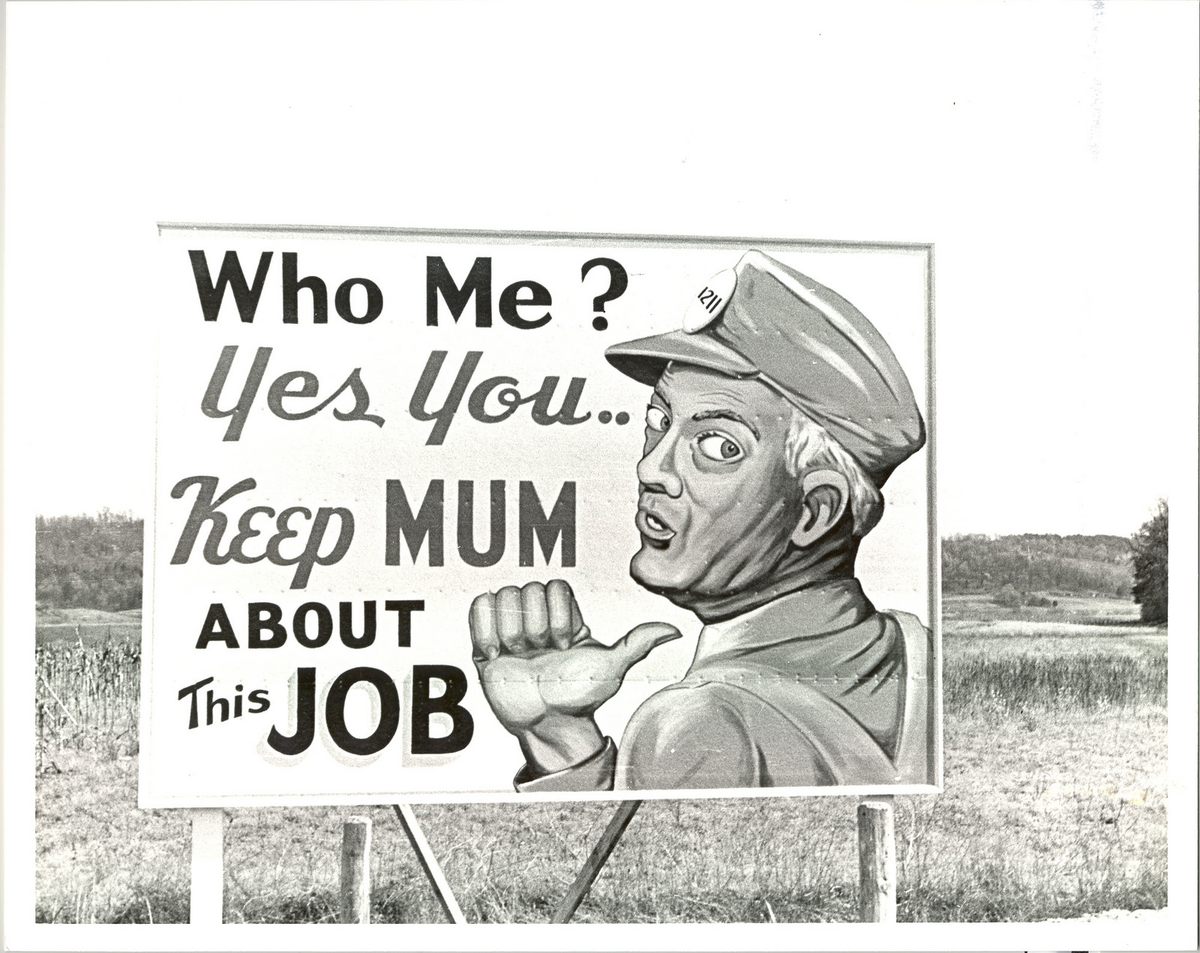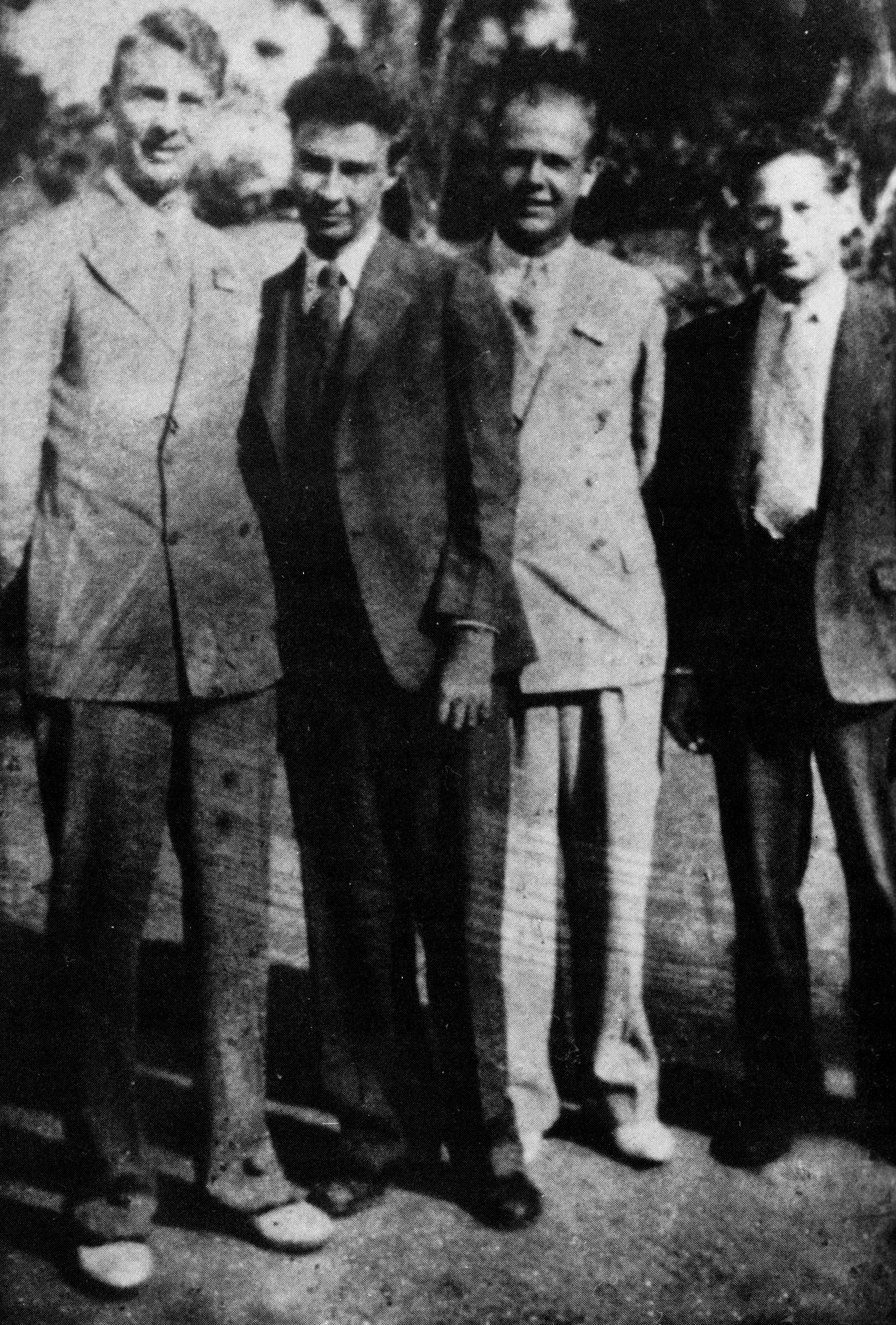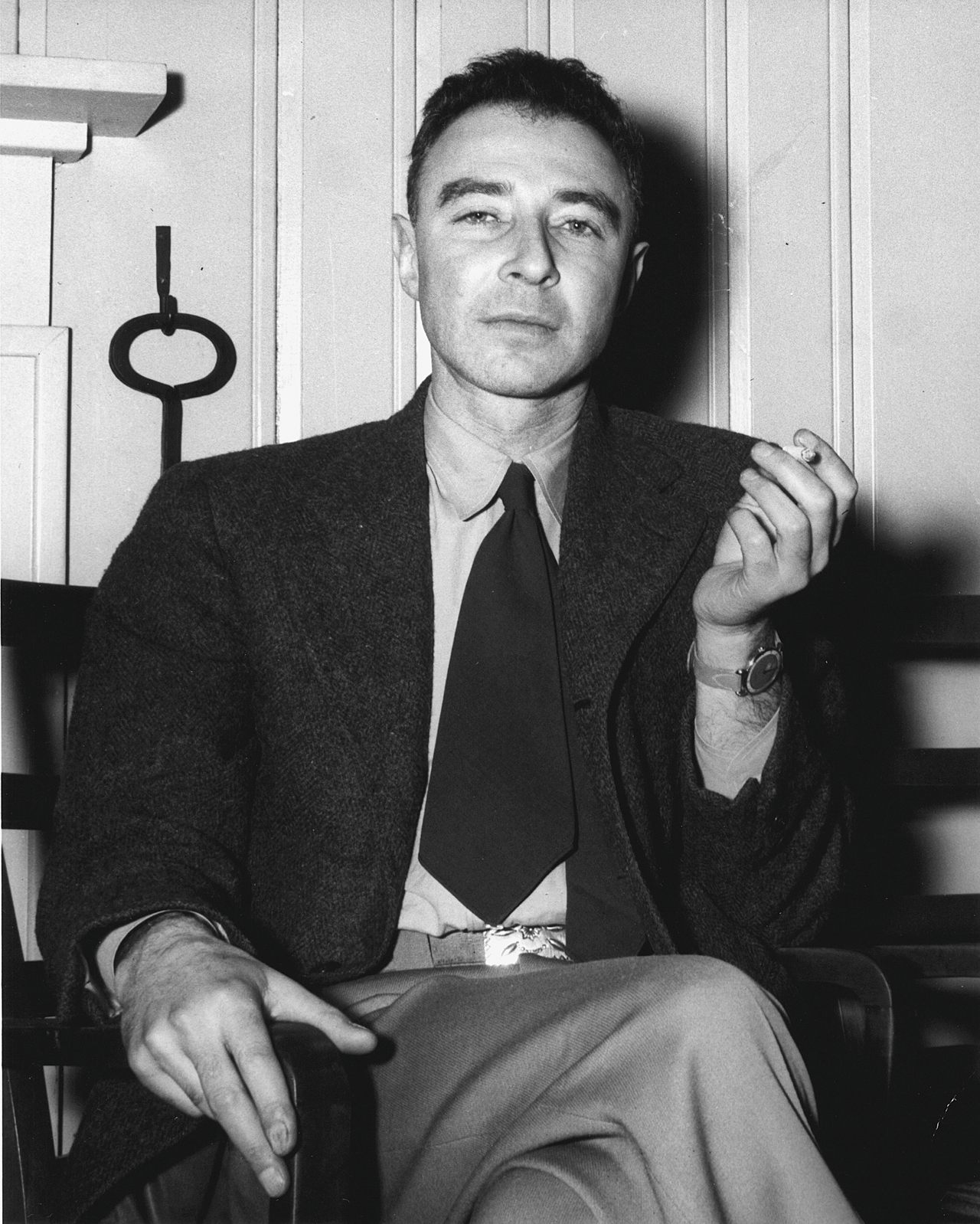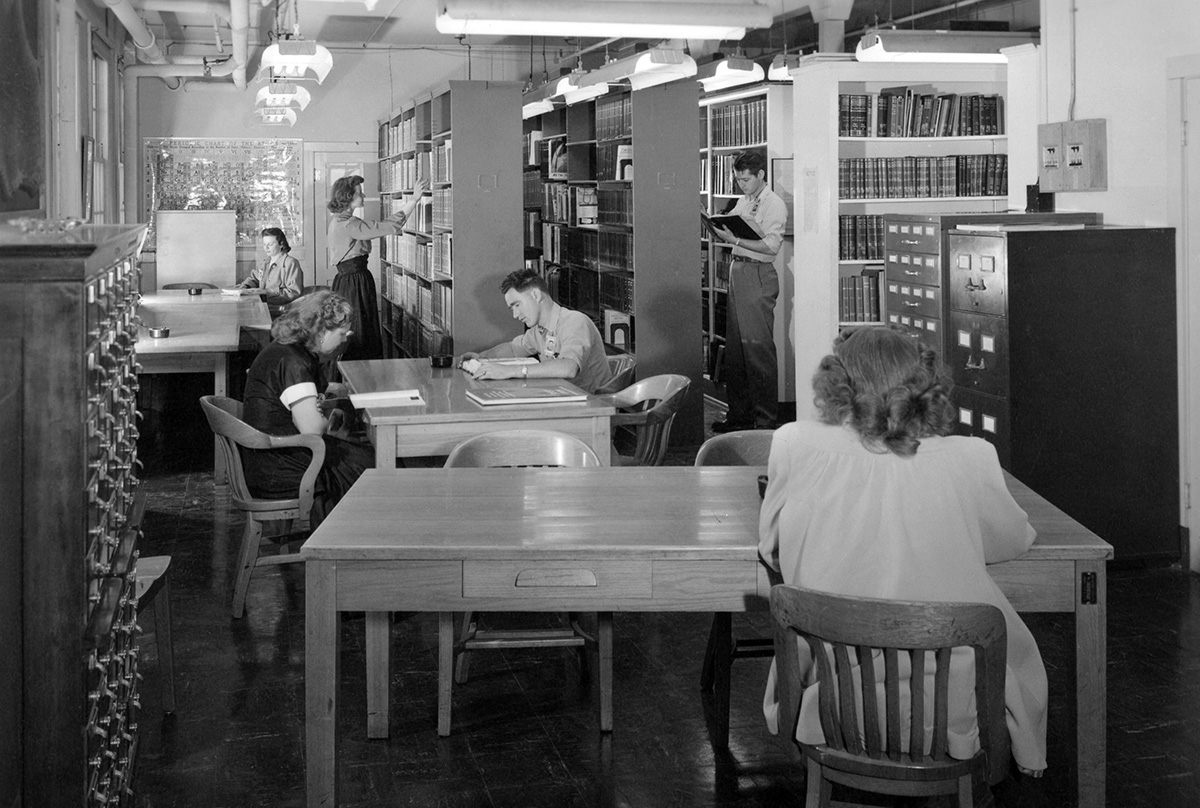The Librarian Who Guarded the Manhattan Project’s Secrets
While dodging accusations of communism, Charlotte Serber made the nuclear bomb possible.
The residents of Los Alamos, New Mexico—a town that wasn’t supposed to exist—lived in a viscous state of secrecy during World War II. To disguise the existence of the nuclear bomb being built there, the group of Manhattan Project scientists, security personnel, and families needed to consider and reconsider their every move. They couldn’t leave “the Hill,” as Los Alamos was known, without required passes. Their mail reached New Mexico through a series of forwarding addresses set up across the United States, arriving in a P.O. box 20 miles away in Santa Fe. Food was purchased from a single commissary; a trip to Santa Fe was “a major event.”
When they first arrived at Los Alamos, they were told to buy train tickets to New Mexico from a variety of locations. One Princeton physicist recounted how he and his colleagues had to avoid the local train station, because it was so small, and too many people purchasing tickets to Albuquerque from there might raise suspicions.
The importance of silence at Los Alamos was doubly true for scientific breakthroughs. One woman, Adrienne Lowry, only learned that her husband Joseph Kennedy had discovered plutonium when she was cataloguing books and kept seeing the acronym “PU.” When she asked her husband about it, he confessed that “PU” stood for plutonium—an element he’d helped to identify a few years earlier.
Though Los Alamos was not the Manhattan Project’s only site—others existed in Tennessee and Washington—its responsibility for the ultimate design of the nuclear bomb mandated special precautions.

One of the most significant features of this elaborate security apparatus was the scientific library, a virtually unknown space that, during the 1940s, housed the secrets of the nuclear bomb.
Nestled alongside the massive Los Alamos lab—which Lisa Bier in Atomic Wives and the Secret Library at Los Alamos described as emanating an “aura of utilitarian haste” with its unpaved streets and barbed wire gates manned by guards—the library appeared quite bleak. The photos that exist today show a small space crammed with books, shelves, file cabinets, and a Ditto machine (an early copier). Because the library was expected to be demolished after the war, everything was built from cheap wood.
The library had two sections: the main area, pictured at the top, and the document room—a locked vault containing reports and designs from Los Alamos and the other Manhattan Project sites. The library’s all-female staff—a mix of wives and Women’s Auxiliary Army Corps officers—needed to catalog, secure, and distribute thousands of books and manuscripts in a matter of months.
The rapid pace made the work so intense that, when one WAAC officer was offered a job at the library, she “took a look at the huge stack of technical reports from chemical companies, piled up ‘like a teepee,’ the classification of which would be her primary task.” According to Atomic Wives and the Secret Library at Los Alamos, “she avoided this sentence, which she termed ‘solitary confinement,’ by opting instead to drive trucks.”

But if library work was among the most tedious on the Hill, the award for the most unenviable job likely belonged to its head librarian: Charlotte Serber, a University of Pennsylvania graduate, statistician, and freelance journalist who at one point interviewed Frank Lloyd Wright for The Boston Globe.
In 1942, J. Robert Oppenheimer selected Serber to spearhead the project in part because of her lack of librarian experience. He wanted someone who would be willing to bend the rules of cataloguing.
Her appointment was a victory for the women on the Hill. Though women were integral to the success of the Manhattan Project—scientists like Leona Woods and Mary Lucy Miller played central roles in the creation of the bomb—none occupied leadership positions.
In this respect, Serber stood alone. As the head of the scientific library, she became the Manhattan Project’s de facto keeper of secrets, a position that soon saw her targeted for an FBI probe—and almost ended in her being fired from the project.

Here is a puzzle. You have no library experience, and you are tasked with a) heading a top secret facility, b) devising security protocols to ensure the U.S. military’s greatest secrets stay hidden, and c) importing thousands of documents to a site in the middle of nowhere—all in a vanishingly small window of time as World War II unfolds. How do you do it?
The answer, according to Serber: work over 75 hours per week.
Upon accepting the position, Serber taught herself the Library of Congress and Dewey Decimal classification systems,* and teamed up with Oppenheimer’s secretary to develop a pass system for accessing the library’s secure vault, requiring that each scientist present a “typewritten letter” bearing Oppenheimer’s signature rather than a badge.

Tasked with apprising all of the scientists of any new breakthroughs in the labs, Serber and her staff had to familiarize themselves with obscure science in order to accurately record and distribute news across the Hill.
Serber also battled apathy toward security protocol in her library. In an obvious breach, scientists sometimes left top-secret technical documents out in the open overnight, where someone without clearance could easily access them. So Serber pioneered nightly sweeps of the library. Those scientists who failed to put away documents were either “required to pay a fee to obtain his documents” or be “forced to become a night inspector for the next shift.”
She did not take her role lightly. Only once did a scientist evade her wrath for failing to lock away a classified document: “he argued that since the report was completely wrong, giving it to the enemy would be a service to the war effort.”

The library was also tasked with delivering the mail. All mail to Los Alamos arrived at a single post office box in Santa Fe, and one of the wives, along with a guard, made the twice-daily pilgrimage to retrieve it. For security reasons, Serber required that the woman keep the mailbag locked to her arm. Serber had the only key. She had to report back to Serber in order to be freed.
But Serber’s greatest challenge proved to be importing thousands of esoteric textbooks, journals, and manuals to a town that isn’t supposed to exist—without raising suspicion. To do it, the Los Alamos librarians ordered close to 1,200 books and complete backlists of 50 journals through an interlibrary loan program with the University of California at Berkeley, where Oppenheimer had previously worked. The books were first sent through a forwarding address in Los Angeles, where they would attract less attention. From there, all thousand-plus of them landed at a single P.O. box in Santa Fe.
Serber also requested orders from the local Santa Fe library: in a July 1945 newsletter, they reported sending “between 3,500 and 4,000 current magazines, 500 books, and many paper-bound books” as well as 100 books for kids to Los Alamos.
The most secretive documents, however, were not sent through mail. A courier carrying a number of black suitcases transported them to the Hill. But when he arrived, the library’s vault wasn’t finished. Serber therefore had to store the documents in an “ancient” safe that functioned so poorly, it opened only if Serber kicked it at a particular point while typing in the lock combination.

But any success the Los Alamos librarians may have had in keeping the project secret was ruined by the Manhattan Project scientists themselves.
The Santa Fe Library kept a registry of all visitors who checked out books. When one of their letters to borrowers reached scientists at Los Alamos, a small crisis ensued. The security teams demanded to know how the Santa Fe Library had obtained the names of so many Los Alamos scientists. As a result, “a dark and cryptic gentleman appeared to find out how this flood of mail happened to be sent them and where All Those Names were obtained.”
Turned out, many scientists, impatient with the long wait for books, had gone into Santa Fe and checked them out themselves, under their real names—a major security violation.
When the Santa Fe librarians explained this, the man left. “If a strange character with a long cigar and his hat over his eyes tailed the staff members, they were not aware of it and feel that he could rarely have had a duller assignment,” the library later wrote.

Charlotte Serber’s husband, Robert, was a physicist on the project and Oppenheimer’s protégé. In 1942, before the Los Alamos project commenced, both Serbers lived in the garage over Oppenheimer’s Berkeley home. In an obituary, The New York Times described Robert Serber as “the intellectual midwife at the birth of the atomic bomb.”
Oppenheimer’s trust in the Serbers was immense: at one point, when Santa Fe residents began speculating about what the masses of scientists and military personnel on the Hill could be up to, Oppenheimer enlisted the Serbers to trek down to Santa Fe and personally spread false information.
The book Bomb recounts how the Serbers entered a local bar with the express intent of telling residents that the Los Alamos scientists were building “an electric rocket,” rather than a bomb. But no one seemed to care. At one point, Charlotte danced with a local man, all the while pestering him about Los Alamos. “What’s your guess about what cooks up there?” she asked. “Beats me,” he said. “Don’t care. May I have another dance later?”
But Oppenheimer’s trust did not save Charlotte Serber from nearly getting booted off of the Manhattan Project. On October 16, 1943, the U.S. Army’s security team recommended that the Serbers be terminated, as they were “entirely saturated with Communist beliefs and all of their associates were known radicals.”

Unbeknown to the Serbers, the FBI had been keeping files on them, specifically on Charlotte, and had even wiretapped the couple on the suspicion that they were subversives. The fact that both Serbers occupied such pivotal roles likely exposed them to greater scrutiny: after all, Robert was a primary developer of the bomb, while Charlotte was the gatekeeper of its secrets.
The FBI consulted a source close to Charlotte for information regarding her political leanings. Her file notes that both she and her husband “were reported to be pacifists at the start of World War II, but later made a turn about face and joined the Committee to Defend America by Aiding the Allies in the spring of 1942.”
Though both of the Serbers leaned left, Charlotte was much more politically active than her husband. During the Spanish Civil War, she dedicated much of her energy toward raising funds for the antifascist movement. And at Urbana, Illinois, she became the publicity chairman for the League of Women Voters, according to her FBI file.
But it was the Serbers’ associations that ultimately damned them. After some investigation, the FBI concluded that the Serbers, especially Charlotte, had a history of befriending “a group of younger faculty members and their wives all of whom were reputed to be extreme liberals and labeled by many as Communists.”

It didn’t help that each of them came from liberal, Russian-immigrant families. Charlotte’s father was a notorious leftist, and he ran the house “as a political and artistic salon.” According to American Prometheus, “Charlotte took her politics straight from her radical father” and became a “fervent activist” for liberal causes in the 1930s.
Robert’s upbringing, too, raised concerns. His stepmother—also a relative of Charlotte’s—was at one point a member of the Communist Party.
But what provoked the Serbers’ near-exclusion from the Manhattan Project was testimony from Oppenheimer himself.
According to the FBI file, when the security team asked Oppenheimer for the names of possible Communists at Los Alamos, he listed Charlotte. “Dr. Oppenheimer advised General Leslie R. Groves while Charlotte Serber was employed by the Manhattan Project, that it was known to him that Charlotte Serber came from a Communist family in Philadelphia and was at one time herself a member of the CP,” although “it was his belief that she was no longer affiliated.” Of his protégé Robert Serber, meanwhile, Oppenheimer told the FBI: “‘I think it is possible [that he is a communist], but I don’t know.’”
Still, Oppenheimer’s ultimate faith in the couple appears to have spared them. After he informed the FBI of their political leanings, Oppenheimer “probably vouched personally for the Serbers’ loyalty,” stating that Robert Serber had told him of the couple’s leftist activities prior to joining the Manhattan Project, and that they had promised to drop them for the sake of the mission.

Despite the FBI investigation into her personal life—which she would only find out about after the fact—Charlotte’s work continued. Her library soon functioned not only as a source of information and a hiding place for the bomb’s secrets, but also as a social hotspot. Los Alamos, barren as it was, had few communal spaces. For many residents, especially for the wives of the scientists, it became a venue to catch up, trade concerns, and exchange gossip.
As the race to finish the bomb reached its fever-pitch, the scientific library proved instrumental. Through Serber, scientists could access and share confidential information at a rapid pace.
Oppenheimer later commemorated Charlotte Serber’s work in the Los Alamos scientific library, writing, “I have never had a complaint of how the Library or Document Room were run” and praising her “surprising success in controlling and accounting for the mass of classified information, where a single serious slip might not only have caused us the profoundest embarrassment but might have jeopardized the successful completion of our job.”
Even so, when the nuclear bomb was tested at the Trinity Site in July 1945, Charlotte Serber was not invited to attend. She was the only group leader not allowed to watch the test; Oppenheimer claimed he could not accommodate her because the Trinity Site did not have the proper “facilities” for women.

After the Manhattan Project drew to a close, the Serbers returned to Berkeley, where Robert began teaching.
Accusations of communism and disloyalty continued to dog the couple, especially with the dawn of the Cold War. Oppenheimer himself battled similar rumors, largely because his wife had at one point joined the Communist Party; in 1954, despite swearing loyalty to the U.S., his security clearance was revoked.
Charlotte Serber likewise struggled to obtain another high-profile librarian job. Her application to work in the Berkeley Radiation Laboratory was rejected because she couldn’t get clearance, probably because of her political background. In 1951, the Serbers moved to New York, and Charlotte reversed courses to become a production assistant at the Broadway Theatre. She died 16 years later.
Though throughout his life, Robert Serber maintained his support for the use of the nuclear bomb, one wonders how Charlotte felt about her role in a weapon that killed so many. As Oppenheimer said: her secret library was pivotal in its construction—for better or worse.
*Correction: The article originally stated that Serber learned the Library of Congress’ Dewey Decimal system. The Library of Congress (LC) and Dewey Decimal systems are different.











Follow us on Twitter to get the latest on the world's hidden wonders.
Like us on Facebook to get the latest on the world's hidden wonders.
Follow us on Twitter Like us on Facebook